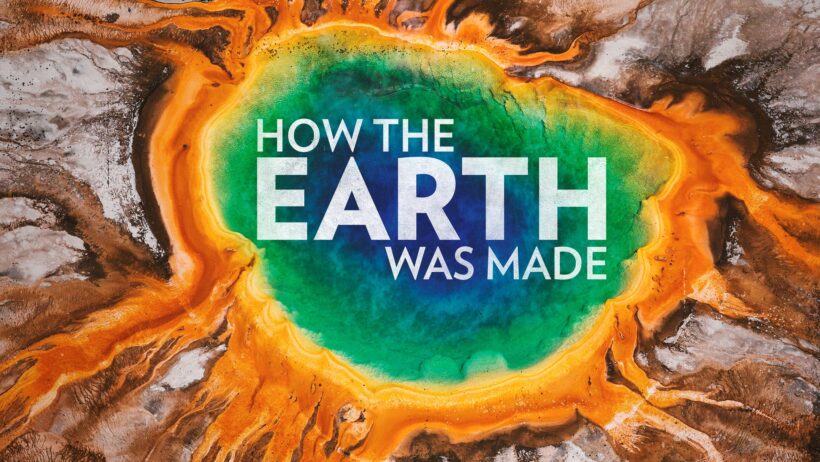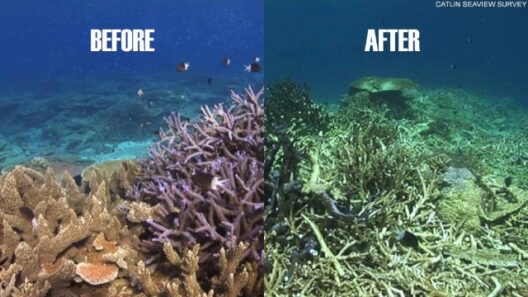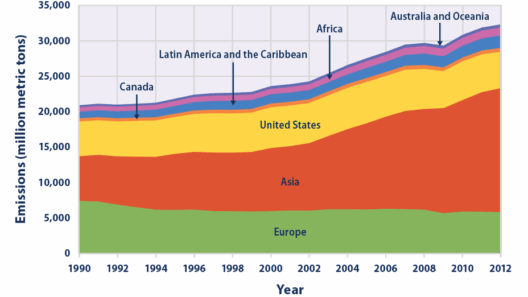Global warming, a pressing issue of contemporary times, is intricately woven into the fabric of human history, technological advancement, and industrial evolution. To comprehend how global warming commenced, one must embark on a journey that traverses both the natural and anthropogenic realms of our planet’s climate system.
Firstly, it is crucial to acknowledge that climate change is not a modern phenomenon; rather, it has been a part of Earth’s narrative for millennia. The planet has experienced numerous climatic shifts, oscillating between glacial and interglacial periods. However, the current acceleration of global warming is predominantly linked to human activities that intensified during the 18th century, laying the foundation for industrialization.
In the late 1700s, an epoch marked by the advent of the Industrial Revolution, humanity began to extract and burn fossil fuels at an unprecedented scale. The transition from agrarian societies to industrial powerhouses heralded a new era characterized by mechanized processes, urbanization, and significant increases in the consumption of coal, oil, and natural gas. This pivotal moment was the genesis of greenhouse gas emissions; carbon dioxide (CO2) and methane (CH4) belched into the atmosphere in quantities far exceeding natural fluctuations, engendering a warming effect.
One may wonder about the scientific underpinnings of this phenomenon. The greenhouse effect is a natural process that enables life on Earth. Solar radiation penetrates the atmosphere, and while some of this energy is reflected back into space, a considerable portion is absorbed and re-radiated as infrared energy. Greenhouse gases trap some of this heat, creating what is known as the greenhouse effect. Without it, our planet would be inhospitably cold. However, the excessive accumulation of these gases due to human activities has exacerbated this effect, leading to a gradual rise in global temperatures.
The pivotal piece of evidence that catalyzed greater public awareness was the Keeling Curve, developed by scientist Charles David Keeling in the late 1950s. By meticulously measuring CO2 concentrations in the atmosphere at the Mauna Loa Observatory, Keeling unveiled a relentless upward trajectory of carbon levels, crafting a visual testament to human influence on the environment. This data not only illustrated the scientific reality of anthropogenic climate change but also stirred an emotional response, culminating in a heightened sense of urgency about the global warming crisis.
The latter half of the 20th century saw significant advancements in climate science. Researchers began documenting and modeling climate change, synthesizing vast amounts of data that illuminated how human activities, deforestation, agricultural practices, and industrial output contribute to global warming. The Intergovernmental Panel on Climate Change (IPCC), established in 1988, became a cornerstone in the climate dialogue, bringing together scientists and policymakers to address this pressing concern. The reports produced by IPCC synthesized current knowledge and predicted how the continuation of high greenhouse gas emissions would impact the planet.
As the dialogue around climate change progressed, the multifaceted implications of global warming emerged. Rising sea levels, altered precipitation patterns, and increasingly frequent extreme weather events have been observed globally. The socio-economic repercussions are profound, with vulnerable populations disproportionately affected. Regions marked by poverty and inadequate infrastructure are more susceptible to climate-induced disasters, such as hurricanes, floods, and droughts, which intensify existing inequities.
Compounding the issue is the pervasive nature of misinformation regarding climate science, often perpetuated by vested interests resistant to change. The fossil fuel industry, for instance, has historically contested the scientific consensus to maintain profitability. These corporate tactics have thwarted policy initiatives aimed at curbing emissions and have contributed to public confusion surrounding climate change. This landscape reveals a troubling intersection between environmental degradation and economic power dynamics.
The fascination with global warming is not merely rooted in its tangible consequences—it is also intertwined with existential concerns about the future of our planet and the sustainability of human civilization. The very fact that our actions today will ripple through generations incites a profound sense of responsibility. A multitude of cultural, ethical, and philosophical questions emerges: What legacy do we wish to leave for future inhabitants of our planet? How can we balance modern living with ecological preservation?
Moreover, indigenous knowledge systems have long recognized the inseparable bond between humanity and nature. The wisdom of various indigenous communities underscores the notion that the environment is a living entity deserving reverence. Lessons from these cultures highlight a collaborative approach to stewardship that harmonizes human existence with the natural world, offering valuable insights into potential pathways for mitigating climate change.
The escalating urgency of climate change has galvanized movements globally. Grassroots activism, exemplified by initiatives like Fridays for Future, resonates with younger generations alarmed by the trajectory of climate inaction. These movements illustrate a burgeoning awareness and commitment to fostering systemic change, emphasizing the need for collective action against the tide of complacency.
As humanity stands at this pivotal crossroads, it is imperative to acknowledge that the origins of global warming invoke a complex interplay of historical, scientific, and ethical dimensions. Moving forward necessitates a concerted, global effort to dismantle unsustainable practices, transition to renewable energy sources, and cultivate resilience in communities susceptible to climate impacts. By comprehensively addressing these issues, it is possible to delineate a sustainable path that not only mitigates global warming but connects humanity with the Earth in a symbiotic relationship. In this pursuit, society can transform fascination into activism, steering a course towards a more sustainable future for the planet.







